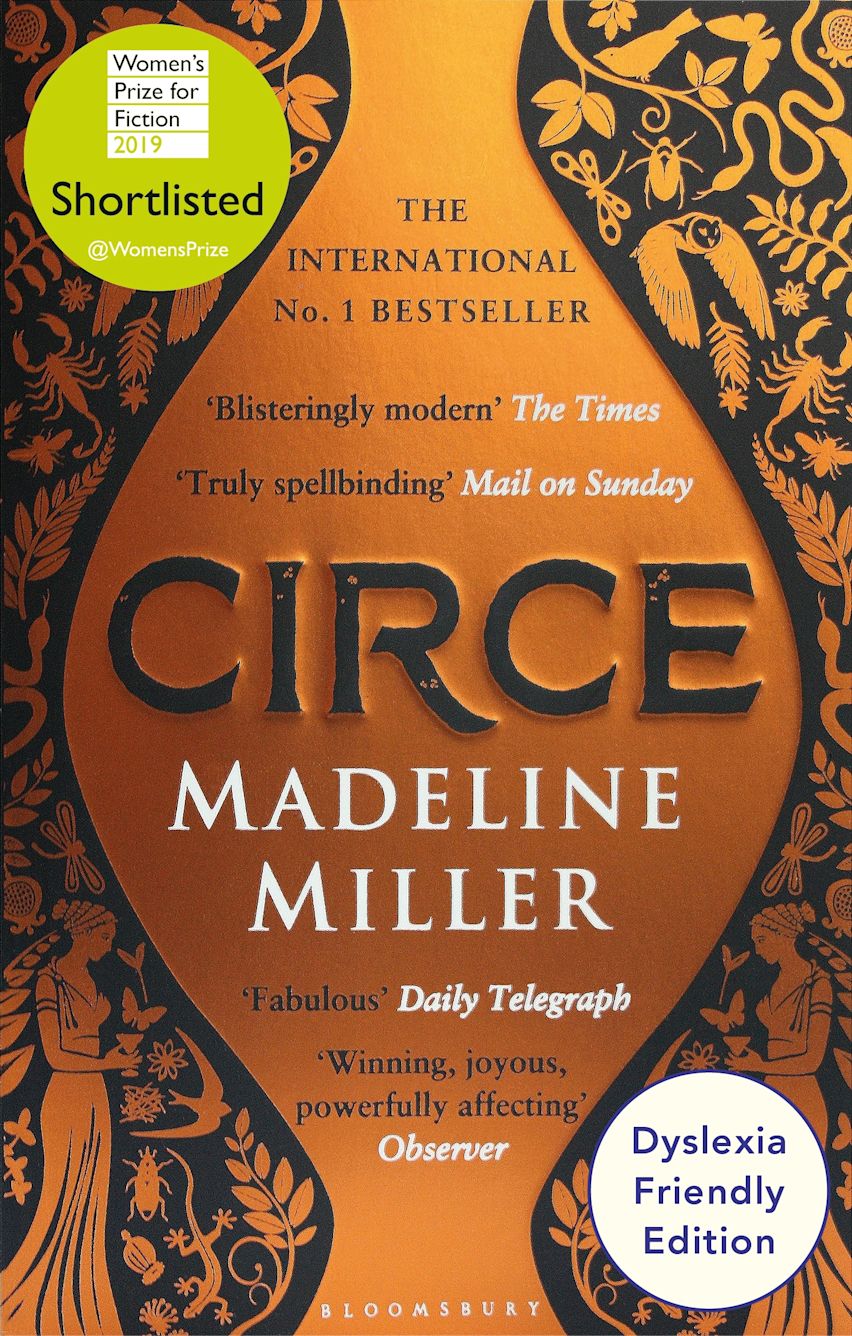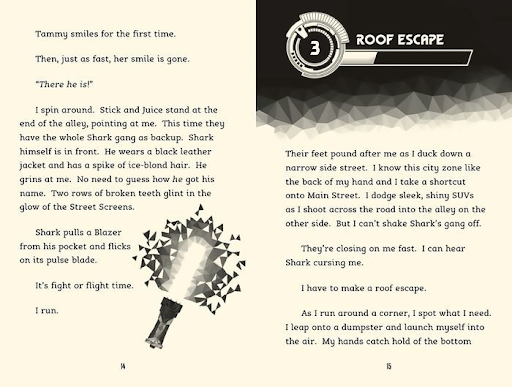Empowering students with language-based learning differences

Siena Blog



The Siena School Blog
Discover, Learn, Celebrate, and Empower
Welcome to Siena's blog, your source for helpful, cutting-edge resources tailored to teachers, parents, and other advocates in the learning differences community. We are dedicated to providing a wealth of curated knowledge spanning various topics, ranging from dyslexia advocacy and awareness to classroom teaching strategies, heritage month profiles, and social and emotional health.
Discover innovative classroom strategies that inspire creativity and foster a love of learning.
Our commitment to social-emotional wellness ensures that we provide valuable insights into healthy student development and self-advocacy.
Discover resources, reading and podcast recommendations, volunteering opportunities, and more for parents in the LD community.
Our important heritage month posts highlight key people, offer reading and podcast recommendations, and more.
How Can a Small School Benefit My Child?

Avg. read time 5-6 min.
Small School Benefits for LD Students
On our three campuses, Siena creates an individualized learning experience for each student to create a safe, responsive, and nurturing environment that supports their academic and emotional well-being.
Families often wonder what kind of educational environment will truly help their child thrive. At Siena, we understand that every learner’s path is unique — especially for students with dyslexia and other language-based learning differences. Our intentional approach to teaching and community can benefit students with dyslexia and other language-based learning differences in several important, complementary ways. At Siena, individualized instruction and a supportive community come together to help students with dyslexia.
Learn how a student-centric, mission-focused school like Siena can make a major difference for students in the LD community from elementary to middle and then high school.
Personalized Instruction for LD Students
Siena’s close-knit educational community allows our teachers to better understand each student's strengths, growth areas, and learning needs:
- LD students benefit from teachers who know them well and can adapt to their learning styles, so Siena maintains a maximum 10:1 student-teacher ratio across all courses. This means that our dedicated, expert teachers can personally engage every student and adapt curriculum materials to meet their learning styles. Read about Siena’s dedicated faculty and staff here on our website.
- Tailored instruction and regular support helps LD students understand how they learn best, providing them with ample opportunities for specialized education and self-advocacy from elementary through middle and high school.
- Being able to focus more of their attention on individual students, Siena teachers can strike a balance between academic rigor and encouraging student independence and academic risk-taking.
Classroom Flexibility and Attention
Personalized learning and individualized attention from Siena’s faculty helps create a learning environment of collaboration, empathy, and shared respect for our students. This translates into successful student learning and academic growth in a few ways:
- Flexibility in classroom settings nurtures personalized learning plans that accommodate students’ dyslexia, neurodiversity, and other learning differences.
- Direct access to specialists in reading, assistive technology, college counseling, annual internships, accommodations, and much more is key to student success. For example, our reading team offers regular targeted reading support through multisensory structured language approaches and daily reading intervention using Orton-Gillingham methodology.
- More attention helps with ongoing communication between families, staff, and classroom teachers to share student progress, adjust strategies as needed, and more.
Community and Confidence
Siena’s connected and student-focused community supports growth and confidence, as well as provides clear social–emotional benefits:
- Schools like Siena foster close-knit relationships between students, teachers, and families, creating a strong sense of community and belonging that benefits everyone.
- Because our students are less likely to fall through the cracks or feel invisible in a small school setting, they typically feel a sense of belonging and of being valued as learners.
- Positive relationships and regular check-ins with faculty and staff can boost self-esteem, which is especially important for LD students who may have faced learning setbacks elsewhere.
Success After Graduation
Siena’s high school program at our campuses in Silver Spring, MD, and Oakton, VA, focuses on our mission and supports our high school students and families in various ways.
- Siena’s personalized learning environment — where every student is known and supported — helps create successful and independent learners who are gradually prepared for college matriculation in each year of high school and then excel in whatever path(s) they choose after graduation.
- Our regular high school curriculum emphasizes academic rigor and individualized support to best prepare our students for their next academic step.
- A key feature of Siena’s high school curriculum is our dedicated college counselor and multi-year college counseling program. In working with students in grades 9-12, our college counseling program emphasizes college readiness, offers college representative visits, and more to break down the process of applying to and then attending college. Learn more about the college counseling program here.
Across all grade levels, Siena offers a personalized, strengths-based approach where teachers know each student deeply and tailor instruction to how they learn best. This intentional structure — rooted in research, relationships, small classes and individualized support — helps students build confidence, develop independence, and discover the joy of learning.
Resources from Siena’s Blog
See The Siena School blog for more posts of interest, including Why Is Early Intervention Important?, College Prep Begins in High School, and Learning Differences and Student Confidence.
Learn Why Siena Might Be Right for Your Child
The Siena School, a national leader in dyslexia education, serves bright, college-bound students with language-based learning differences on DC Metro area campuses in Silver Spring, MD (grades 3-4 and 5-12) and Oakton, VA (grades 3-12).
Dyslexia-Friendly Book Editions

Avg. read time 3 min.
Dyslexia Awareness Month 2025
For Dyslexia Awareness Month 2025, Siena is taking the opportunity to highlight a promising new initiative from some book publishers: dyslexia-friendly editions of adult and young adult books. These offer dyslexic readers another option for print books by using certain font choices and page design elements to ease readability.
Dyslexia-Friendly Book Editions

Two presses headquartered in England, Bloomsbury and Books on the Hill Press, have published several dyslexia-friendly book editions in the past few years.
Bloomsbury editions released in the past year include Circe and Song of Achilles by Madeline Miller, Piranesi by Susanna Clarke, and The Kite Runner by Khaled Hosseini. Books on the Hill Press has also offered dyslexia-friendly versions of such classics as Jane Eyre, Frankenstein, and selected Sherlock Holmes stories, among many other titles. In addition, they’ve also published versions of contemporary books by Bernard Cornwell and Garth Nix.
Jess Stevens, Rights Assistant for Bloomsbury's Adult Trade titles, shared in this short piece on their website that, as someone with severe dyslexia, she saw a need for such books and then pitched the idea to Bloomsbury in 2021:
When you’re young it’s because you don’t know the rules around reading and spelling. But as you get older, whilst those are still issues you encounter, they are joined by difficult formats, font choices and paper colour, adding to an already taxing experience.
Bloomsbury’s dyslexia-friendly editions use a sans-serif font and cream-colored paper with blue text to increase contrast and thus accessibility for dyslexic readers.
The dyslexia-friendly editions from Books on the Hill Press adopt a similar approach, using a larger, sans-serif font and generous line spacing to ease reading and processing. Books on the Hill Press was founded by Dr. Alistair Sims, who is dyslexic and co-owns and -operates a bookstore with his sister in Clevedon near Bristol, England.
“People assume that, if a book is for dyslexic adults, then it’s simplified in plot and language, but it’s not. We’re not really changing the contents, we’re changing the formatting to make it easier to read.” Learn more about Sims and Books on the Hill Press in this 2024 article from The Guardian.
There’s hope from Stevens, Sims, and others in the industry that this trend will catch on among major publishing houses to further expand availability for dyslexic readers.
Resources for Publishing Accessibility
Here are some additional resources for dyslexia-friendly reading:
- Books to Get Kids Reading (Dyslexia Help)
- Dyslexia Friendly Books for Children (Barrington Stoke Books)
- Some of these have Kindle editions with text that can be adjusted (e.g., size, font, color, margins, spacing, alignment)
- Everyone Can Be A Reader (Barnes & Noble)
- These editions use specialized fonts, paper tones, and formatting to increase readability across a wide range of age and interest levels. There is also a dedicated section and signage in Barnes & Noble stores.
- Flyleaf Publishing

Siena Resources
Remember that Siena’s intentionality of communication for the LD community applies to our website: the LD-friendly dyslexie font can be activated by clicking on the Dyslexie icon on the top right corner (desktop) or bottom left corner (mobile) of our website.
Click here for some Helpful Resources on dyslexia, ADHD, college preparedness, and more. You can also explore our series of blog posts on Teacher Resources, Social-Emotional Health, and Cultural Heritage Spotlights.
The Siena School, a national leader in dyslexia education, serves bright, college-bound students with language-based learning differences on DC Metro area campuses in Silver Spring, MD (grades 3-4 and 5-12) and Oakton, VA (grades 3-12).
Common Acronyms in LD Education: Understanding the Language

Avg. read time: 3 min.
Every professional field has its own lingo, and special education is no exception. As part of Dyslexia Awareness Month 2023, Siena is pleased to offer a short, useful guide to terms that parents will read and hear often as they navigate their child’s education.
Terms such as LD (Learning Differences), IEP (Individualized Education Program), LBLD (Language-Based Learning Differences), and SLD (Specific Learning Disability/Disorder) are common. Parents could hear these often when first connecting with an admissions representative or learning specialist, as well as when going through testing, the IEP process, and discussions with friends and neighbors..
Parents new to the LD community might be wondering about understanding the process and language around an LD diagnosis as they take the appropriate next steps.
Common Terms in the LD Community
Acronyms in the LD community are a useful shorthand for frequently used terms that are integral to the process. This helps make conversations more fluid and understandable during key times, such as:
- neuropsychological evaluation,
- IEP consultation,
- meeting with teachers or administrators
- school admissions materials, and
- discovery call or tour with an admissions team member.
Parents might talk with various specialists, school administrators, advocates, and so on, and having a shared language means having a shared understanding during such an important time. Here are some commonly used acronyms in LD education:
Testing and Diagnosis
Twice Exceptional | |
504 Individual Education Plan | |
ADHD | Attention Deficit/Hyperactivity Disorder |
Auditory Processing Disorder | |
Children and Adults with Attention-Deficit/Hyperactivity Disorder | |
EF | Executive Functioning |
GT/LD | Gifted and Talented/Learning Difference |
LBLD | Language-Based Learning Differences |
Orton-Gillingham reading method | |
OHI | Other Health Impaired |
Multisensory Math | |
SLD | Specific Learning Disability |
SLI | Speech-Language Impairment |
SLP | Speech Language Pathologist or Structured Literacy Program |
Wechsler Individual Achievement Test | |
Wechsler Intelligence Scale for Children | |
Woodcock-Johnson Psychoeducational Battery |
Accommodations and Supports
AT | Assistive Technology |
DC Capital Area Branch of the International Dyslexia Association | |
ESY | Extended School Year Services |
International Dyslexia Association | |
Individualized Education Program | |
Learning Disabilities Association | |
OT | Occupational Therapy |
Washington Independent Services for Educational Resources |
Dyslexia Resources for Families
- Frequently Used Acronyms in Education — Great Schools
- Common Acronyms For Special Education — Plainfield (IN) Community School
- EDFacts Acronym List (downloadable PDF) — US Department of Education
- Parent Resource Center — Weinfeld Education Group
Families in the LD community can also visit Siena’s resources page, student profile, and glossary of terms for additional help. The Siena blog has several posts for parents and community, including ones about the importance of early dyslexia diagnosis and intervention and building confidence in LD students.
The Siena School, a national leader in dyslexia education, serves bright, college-bound students with language-based learning differences on campuses in Silver Spring, MD (grades 3-12) and Oakton, VA (grades 3-11).
Lessons in Dyslexia Advocacy from Siena Alumni

Avg. read time: 3 min.
There are certain challenges that come with being a student with dyslexia. There are also challenges to being a new student. The reason I can relate to what current students are doing/thinking/feeling is because I did it/thought it/felt it all too. —Meribor Matusow (Siena ‘18), Events Coordinator
As part of Dyslexia Awareness Month, Siena is again reflecting on the strategies we regularly adopt to support our students’ different learning styles.
Students at both our Silver Spring and Northern Virginia campuses have access to models of success and resources every day to enhance their learning and dyslexia advocacy, such as daily slides highlighting notable people with dyslexia, assistive technology, and a regular emphasis on self-advocacy.
A relatively new model of success that Siena students have access to is Siena alumni who’ve returned to the community as paraeducators or staff. There are currently four alumni who work regularly at Siena: Perry Singletary (Class of 2011) and Ryan Salomon (Class of 2012) are paraeducators at Siena Silver Spring, Brandon Butsavage (Class of 2016) is Office Manager at Siena Northern Virginia, and Meribor Matusow (Class of 2018) is Events Coordinator at Siena Silver Spring.
In making the transition from Siena students to Siena staff, these alumni regularly model success for students while also providing an additional layer of understanding as former students.
Dyslexia Accommodations for Students
Siena is there to provide a mentor-mentee relationship where it’s tailored toward the needs of the student and their learning differences. I know that personally because it was 9 years as a student for me. —Brandon Butsavage (Siena ‘16), Office Manager
A particular benefit of alumni working at Siena is that they can see aspects of themselves in current students. “Every student reminds me either of a classmate or of myself,” Brandon Butsavage recently shared, underscoring the unique perspective that Siena alumni bring to their interactions with current students.
Paraeducator Ryan Salomon has applied his experience as a Siena student to his current work in the classroom and in after school. “I understand how Siena teaches and how our students learn best,” he shared. Salomon credits his awareness of how to keep students engaged and focused to his years as a Siena student who had to learn how to do the same. When helping elementary students with their homework during after school, for example, Salomon has applied some methods for spelling and sounding out words that he learned as a student.
Similarly, Perry Singletary recently gave elementary student Grayer a lesson in discovering how he learns best in math class. Having worked with elementary students in previous jobs, Singletary is now a paraeducator with Siena’s elementary team. When Grayer couldn’t quite figure out an addition problem in Prodigy, Singletary shared, “I realized how I could help him through the process because he was doing something similar to what I did as a student—and still do now.”
Instead of trying to do the math problem horizontally on the laptop screen, Singletary rewrote the problem vertically on a whiteboard to show Grayer a different way of seeing—and then solving—it that worked for him. Once they worked together to break down the problem on the whiteboard, Grayer went back to Prodigy to enter the solution.
Using a multisensory accommodation helped Singletary lead Grayer through the mathematical process because the same approach has worked for her in the past.
Dyslexia Advocacy for Students
Recently, Singletary also helped give 4th grader Sofia a lesson in self-advocacy. Sofia was hesitant to ask questions in class because she was worried about being wrong or being the only student who didn’t know the answer. “I reminded her that no question is a bad question—especially at a school like Siena,” Singletary noted.
In this video about his own dyslexia advocacy, alumnus Partha Roy (Siena ‘18) shares how he applied the tools he learned as a Siena student while he was in college. (Roy recently graduated magna cum laude from Eastern Mennonite University.)
Like Roy, Meribor Matusow has continued to apply the lessons in self-advocacy she learned as a student. “Modeling success as someone with dyslexia isn’t about how fast/well I can read and write now,” she shared. “It’s about being able to go into life as an adult and find or create accommodations that I need to be successful.”
Resources for Dyslexia Advocacy and Accommodations
As Siena staff members, these four Siena alumni regularly teach students lessons in accommodations and self-advocacy, as well as model success for life after graduation.
This blog post on dyslexia advocacy and accommodations from Dyslexia Awareness Month 2021 highlights the assistive tools, support networks, and principles of self-advocacy students have access to. Learn more about self-advocacy at Siena and Siena’s alumni community on our website.
Siena’s mission-focused innovative dyslexia education is designed for students in grades 3-12 with language-based learning differences on campuses in Silver Spring, Maryland, and Oakton, Virginia.
